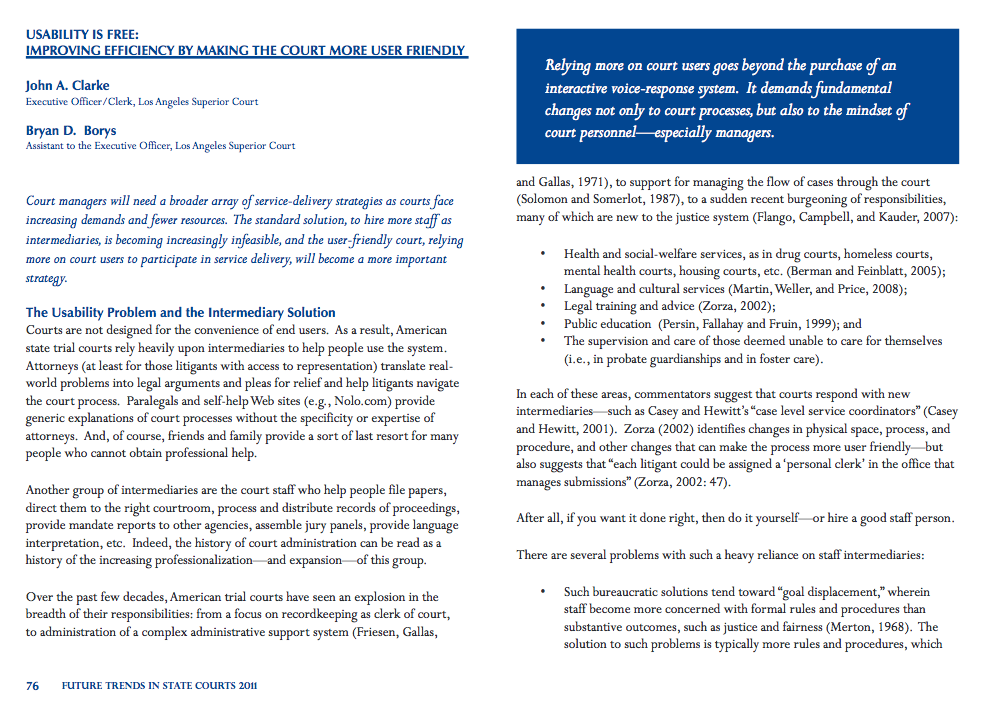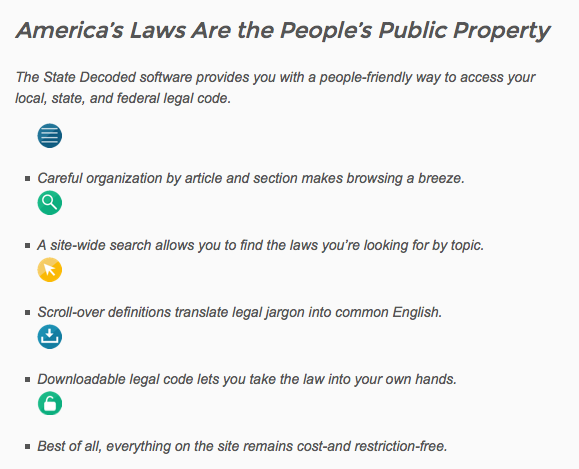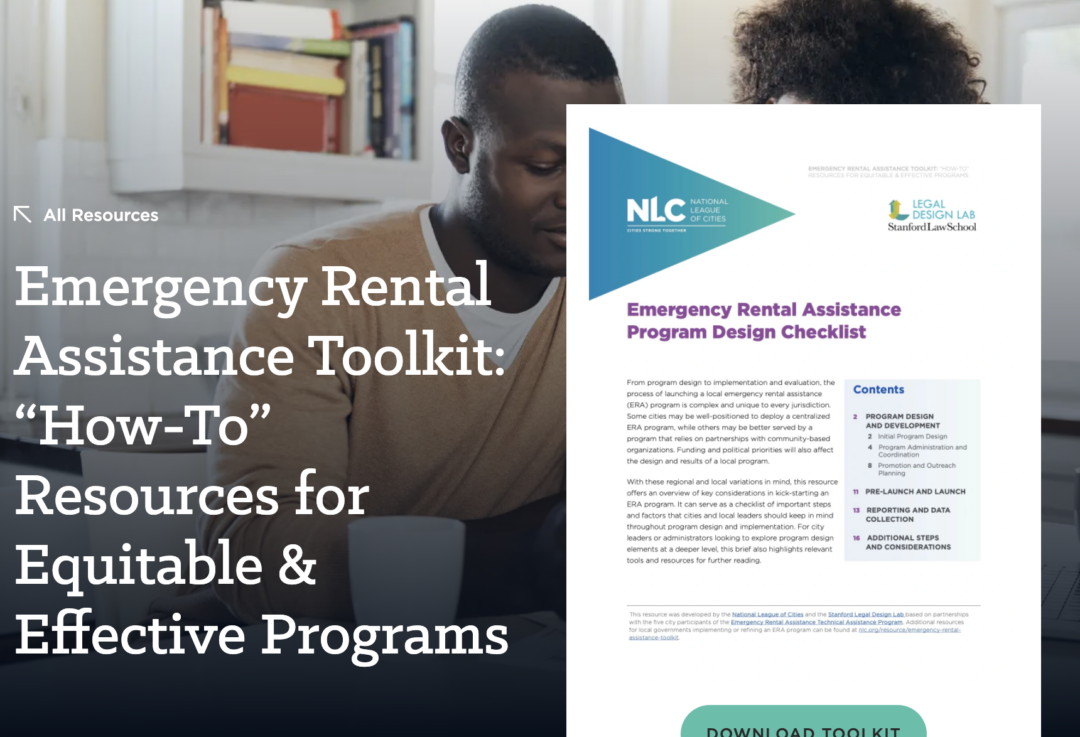This article discusses the potential for making usable, user-friendly courts. It highlights this approach to refocus how court staff tackle the challenge of being overburdened with litigants:
Usability strategies involve more than simply dumping tasks online. We can identify seven new types of understanding that such strategies typically require of court managers:
-
Understanding of the needs and desires of court users;
-
Understanding users’ abilities—and sorting (or supporting self-sorting) of users into different service levels, each with appropriate supports;
-
Understanding of the court’s processes, so as to build in foolproofing and safeguards that will ensure that users are guided in the right directions;
-
Understanding of legal constraints, so as to choose which user activities are allowable, and which must be prohibited;
-
Having a greater appreciation of options for where and when to deliver services (e.g., online, at the user’s convenience);
-
Being able to redesign court processes to greater reflect the needs of court users, relative to court personnel; while
-
Avoiding the ubiquitous temptation to fill in the usability gaps by hiring staff.
Some of the recent innovations in a more usable court system are:
- clinics and workshops for self-represented litigants
- broadcast of resources to litigants
- online juror orientation



